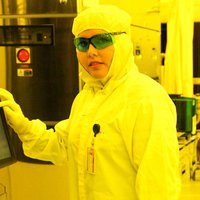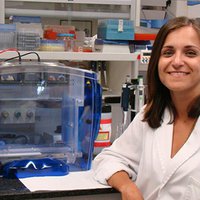"For over a decade the ability to analyze biological samples of blood and urine using small, inexpensive tools has forecasted a similar revolution to the one caused by the miniaturization of computer chips. The researcher Wendell Coltro, professor at the Federal University of Goiás (Brazil) and an expert in the design of the microfluidic platforms used by these portable analytical devices, believes in this. Once he had chosen his area of ??interest, Coltro recognized that the next step in his career defining techniques to produce these small devices at a low cost was “a result of funding constraints”.
Economic constraints focused the attention of the young doctor of chemistry on two cheap and accessible materials that form part of the new generation of analytical devices: paper and toner. The toner, used as ink in many laser printers, is used to draw patterns on plastic surfaces and wax paper. These patterns drawn by the printer are then sealed and help to define, as if they were small walls, the future microfluidic device’s channels. The result is a sandwich-like figure, crisscrossed by tiny internal channels through which urine, blood, plasma and other samples are passed and mixed with reagents for chemical analysis.
Coltro is also designing and manufacturing paper-based devices, called uPADs, which like other devices manufactured using toner, are disposable, simple and can be extremely cheap (costing between one and five cents per unit). The uPAD take advantage of the porous structure of cellulose and its capillarity, qualities that eliminate the need for an external stimulus to cause the liquid samples to flow through them, something that would otherwise require external energy and pumping elements that would increase production costs and complicate the device.
Therefore instead of using needles or pumps, Coltro suggests, drawing a series of hydrophobic barriers that would guide the path of the sample on the paper´s surface to guide the sample, which the capillarity will drive to flow to specific areas of the uPAD containing immobilized reagents with which it is intended to react, for example glucose in the sample. Finally, the reaction between glucose and reagents generates color changes that can be perceived by the naked eye, allowing, for example, the detection of a very high blood sugar level."




